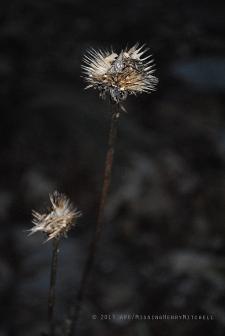Where I live, we haven’t yet been hit by snow or ice, so it’s time to focus on garden clean-up.
In addition to raking and shredding oak leaves, I’ve been cutting back dead stems and diseased leaves of perennials and picking out twigs that have fallen in the heavy rains. But I try to remember not to be too thorough. Leaving some plants with decorative seed heads or berries allows birds to find food easily in the winter.

Berry cluster of Nandina domestica
Like the rest of us, birds need some variety in their diets. While many of us enjoy setting out bird feeders in the winter, encouraging them to forage in our gardens is both healthy for them and good for our gardens. If birds become accustomed to finding food and shelter sources in your garden in the winter, you can be assured they will return in warmer seasons to help you control your insect populations.
Additional tips for encouraging birds to your winter garden:
- If you have native perennial plants or grasses in your yard, don’t be too hasty to cut them back. Native plants provide especially good food sources for local bird populations.

Seed heads of Echinacea purpurea
- Leave a bit of leaf litter in your garden. Leaf litter attracts insects, another important food source for birds.
- Provide fresh water: If you have a bird bath, keep it clean. Wash it weekly using mild soap, and rinse well.
- Give them shelter: Any dead or pruned limbs may be stacked or piled in the garden to provide cover for birds in your garden. Establishing bird feeders near brush piles or dense evergreen shrubs like hollies, cedars, or most conifers, allows small birds to take shelter quickly if hawks or other predators make appearances.


